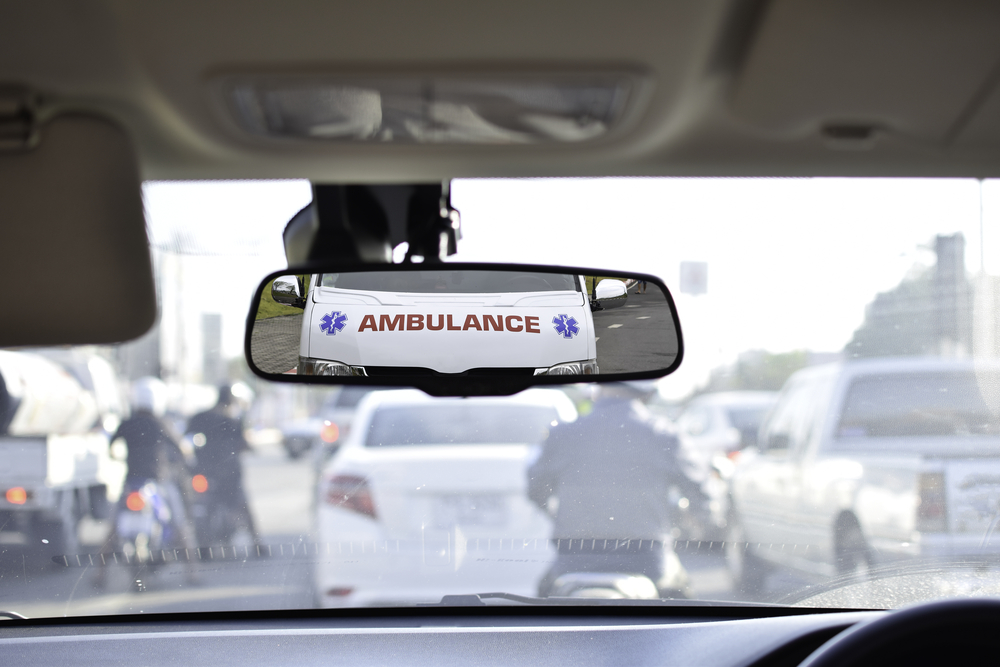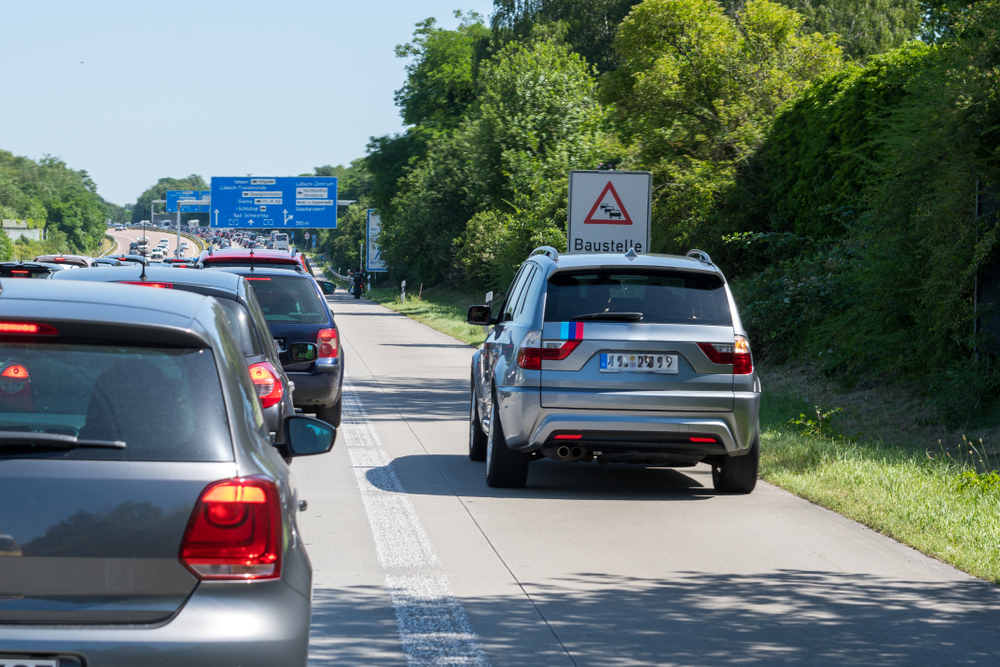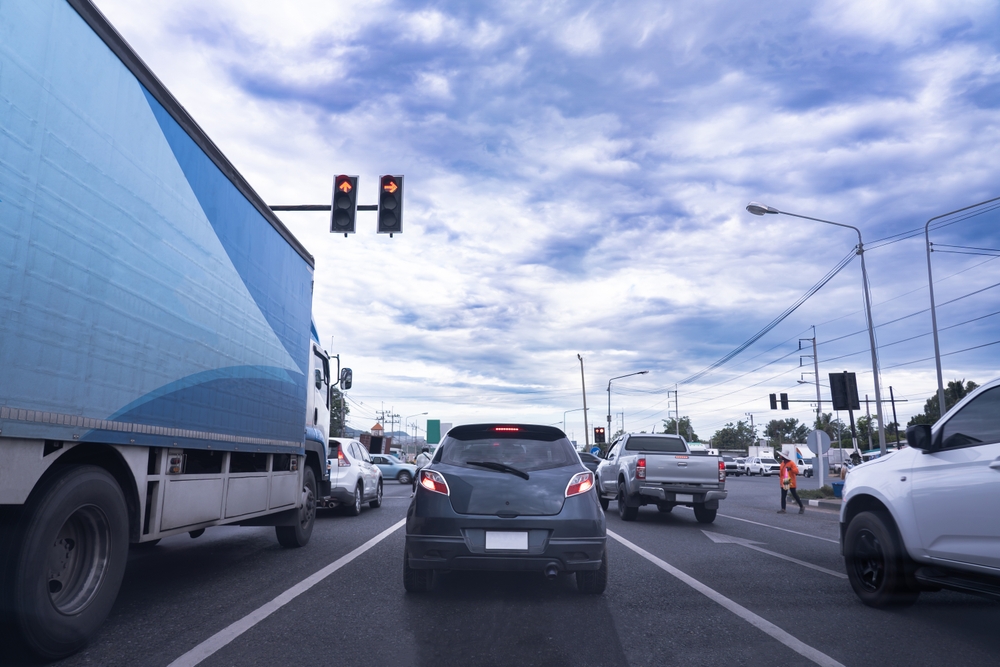Road Rules
We all know about speed limits and stop lights. But there are a lot more rules of the road that many people are a little less familiar with. Whether they are enforceable laws with legal implications or road etiquette norms, these are the written—and the unwritten—rules of the road we all need to be more aware of. How many are new to you?
On-Ramp Etiquette
Merging onto a highway from an on-ramp can be a little scary or intimidating for some drivers as they come from a slower road to one moving at highway speeds. But to make it smooth and safe, it requires that everyone does their part.
For your part—as the one merging onto the highway—you need to speed up so that you are entering the highway at a speed that is in line with said highway and the cars going by. Going slowly might make you feel safer, but in this case, it can cause big problems for the cars going by who might have to slam the brakes or swerve into the next lane to accommodate your overcautiousness.
On-Ramp Etiquette
On the other side of the on-ramp pact are the cars on the highway. Their job is to recognize cars emerging from the on-ramp and move over into the left-lane if possible, or at least maintain their speed going past the on-ramp so that cars merging in can time that merge with traffic.
Cutting Through Parking Lot
We get it—you're stuck in a long line of traffic at a stop light and it would be so easy to just pull off into a parking lot or gas station and drive right around the offending line of stopped cars. But besides just annoying the other drivers at the intersection, it's actually against the law (at least, in many places it is).
Don't Pass On The Right
As you are probably aware, on a multilane highway, the right-hand lane is for slower traffic, while faster traffic and passing is to be done via lanes to the left. This means: If someone is driving too slow for your taste in the middle or left-hand lanes, it might be tempting to speed past them on the right, but...don't do it! It's dangerous—and in many states, it's illegal.
No Rubbernecking
You might not think that a little rubbernecking is that big a deal. But what you don't realize is that your rubbernecking can have a massive effect on traffic conditions for people who haven't even gotten to the rubbernecking location yet. Add to that a bunch of other slowed down looky-loos and you will be well on your way while cars multiple miles behind you are now getting stuck in a traffic jam they had nothing to do with.
Flash For Speed Trap
There's no rule saying you have to warn other drivers about speed traps or police cars up ahead, but it sure is a nice thing to do. Just a couple quick flashes of your headlights will let oncoming cars know what awaits ahead and can help your fellow motorists avoid a ticket.
Flash For Speed Trap
As far as the actual legalities of the situation—from what we can tell, it is completely legal to warn other drivers of an upcoming speed trap. However, flashing your lights at a non-emergency vehicle can, in some states, be a ticketable offense.
Leave A Note
If you do happen to ding another car, bump them, or any other such incident and the owner isn't there.... leave a note. Yes, we know it sucks and admitting we did wrong is difficult. But it's the right thing to do and, if nothing else, it's good karma.
Four-Way Stops
Is there anything more awkward than coming to a four-way stop along with three other cars and no one knowing who has the right of way? Well, here are the actual rules of the situation: Whoever got to their stop first gets to go first. If two cars arrive at the same time, the car to the right gets to go first—unless, of course, they wave you ahead. But if they do, don't forget the "thank you" wave.
"Thank You" Wave
Now, there are of course no legal requirements to give someone a "thank you" wave if they give you their right of way or let you merge in front of them. But, if we may quote George Constanza here: "We're living in a society!" And as members of said society, it is a common, and much appreciated courtesy to say "thank you"—which, when driving, is a good ol' fashion wave of appreciation.
 Nataliya Dmytrenko, Shutterstock
Nataliya Dmytrenko, Shutterstock
Stay Out Of Blind Spots
Sure, you may be the kind of person that's always checking their blind spots while they drive—and especially when you're about to turn or change lanes. But maybe not everyone else is as diligent as you about such things. So, why not be aware of your positioning in relation to other cars on the road and stay out of other vehicle's blind spots as much as possible. Better safe than sorry.
Seatbelts
It's been pretty well proven over the decades that seatbelts save lives. And while most of us wear our seatbelts, too many of us are guilty of forgoing them when it's just going to be a short drive. However, the duration of the drive shouldn't be taken into consideration. In fact, studies have shown that most car accidents take place close to home (one study even put the numbers at 77% of accidents happening within 10 miles of a person's home).
Seatbelts
And speaking about seatbelts and unwritten rules—while it is illegal for an adult to be in the front seat without wearing their seatbelt, New Hampshire and the District of Columbia are the only two states without such a law in place. But just because it isn't against the law in those states, doesn't mean you shouldn't wear them!
Flashing For Lane Change
As some of you know, those blinkers aren't just for turning. They also can, and should, be used when changing lanes on the highway—something that unfortunately isn't second nature to as many drivers as it should be. Also, not only is it safer as a warning to other drivers what you plan on doing, it also activates the "side assist" technology in many newer cars, which will quickly warn you if there are any hazards posed by a lane change in that instant.
But just as important as it is to turn on your blinker when changing lanes, please don't forget to....
 Cars and Travels, Shutterstock
Cars and Travels, Shutterstock
Turn Off Your Blinker After Lane Change
Yes, we've all done it. Changed lanes and forgot to turn off the blinker—so now we're driving along with no plans on switching lanes and yet the flashing light on the back of our vehicle indicates otherwise to the cars behind us. This is especially important in a three-(or more) lane highway situation when one has just moved into the middle lane. Now the cars behind you don't know if you plan on moving over again or if you just forgot to click it off.
Pull Over for Emergency Vehicles
If you hear the whirr of an ambulance, firetruck, or police siren behind you, move over and give them room to pass. Unless, of course, the cop is whirring at you, in which case, don't just move over—pull over. There are laws in every state regarding yielding to emergency vehicles.
 Dilok Kiatlertnapha, Shutterstock
Dilok Kiatlertnapha, Shutterstock
Don't Honk At Stoplights
Maybe the person in front of you isn't as quick on the gas pedal as you'd like when the light turns green—but honking is such an aggressive move, so please use it sparingly. When the light changes, count to like three or four. If the car still hasn't budged, then a quick honk reminder is appropriate. Otherwise, just be patient for literally a second and you'll be on your way.
Unless you can see that the person is on their phone—then we say, honk away!
 PeopleImages.com - Yuri A, Shutterstock
PeopleImages.com - Yuri A, Shutterstock
Keep Checking Your Mirrors
This may have been something they taught us when we took our driving lessons, but it's often one of the first habits to go by the wayside the more one drives. Always be checking your mirrors. Don't just check your rearview mirrors and side mirrors when you want to turn or change lanes. Get in the habit of checking them regularly as you drive—which will make you better aware of your 360 surroundings and make for fewer surprises and a much safer time on the road.
Yielding
To yield or not to yield, that is the question. And here's the answer. According to The American Safety Council you must yield:
At a yield sign. To pedestrians in a crosswalk. To persons using a seeing eye guide dog. To persons using a white cane with or without a red tip. At uncontrolled intersections where vehicles are already in the intersection. At “T” intersections where you must yield to vehicles on the through road. When turning left in which case you must yield to oncoming pedestrians, cars, etc. When driving on an unpaved road that intersects with a paved road. When returning to the roadway after the car is parked.
Tailgating
While you might know that tailgating is dangerous, did you also know that it is illegal in Canada and in most American states? It's true that you don't often see police pulling people over and writing up tickets for tailgating—but they can.
Phones!
We're not sure which is worse. The fact that it's 2024 and way too many people are still using their cell phones while driving—or that not every state in the union has laws against it. Most of them do, though.
Phones!
And would it surprise you to know that it's also illegal to use your cell phone even when stopped at a red light or in a traffic jam?
Too Slow
Just like driving too fast is dangerous and illegal, the same can be said about driving too slow. Many highways have minimum speed limits meant to keep traffic flowing at a certain rate. If your low speed impedes that traffic, you could be ticketed for driving too slow.
Pick-Up Etiquette
So, you're picking up your friend. How considerate of you. However, please make sure you're also being considerate of other drivers on the road and don't double park and wait for your friend to come to the car. Either coordinate with them so that they are right there waiting to jump in or find somewhere you can pull over where you aren't impeding other drivers and causing unnecessary traffic jams.
Open Doors Carefully
Opening your car doors with caution is important in a couple different scenarios. If you're parking on the road, then checking to see if another car—or a bike—is about to pass by before you fling your door open is a really smart idea that could avoid damage or even injury. And just so you know: Most states have laws that put the blame on the person who opened the door, not the person who hits it.
Open Doors Carefully
The other situation would be parking in a lot where the car next to you is less than a doors-length away. Opening the door with caution means avoiding dinging your vehicular neighbor. Which actually reminds us of another important piece of driver's etiquette.
 Albina Gavrilovic, Shutterstock
Albina Gavrilovic, Shutterstock
STOP! (Sign)
That red octagonal sign is a stop sign—not a "slowly roll through" sign. We might all know this, but knowing and doing are very different things—as all of us who've gotten a ticket for a rolling stop can attest to.
 Ramil Gibadullin, Shutterstock
Ramil Gibadullin, Shutterstock
STOP! (Light)
We know we mentioned it in the introduction as something everyone knows, but you'd be surprised to know how many people just fully run right through red lights. We don't know how many red light runners there are, but we do know that in 2017, the Insurance Institute for Highway Safety (IIHS) reported that 890 people were killed in red light running incidents—with a further 132,000 injuries.





























